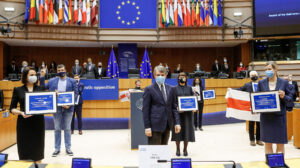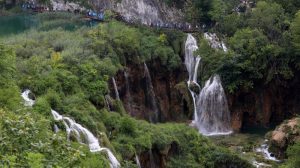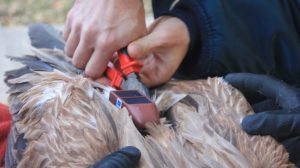The Minister of Agriculture, Forestry and Food, Irena Šinko, met with the Croatian Minister of Agriculture, Marija Vučković, at a farm in Sela pri Ratežu.
The two ministers exchanged views on the issue of the Grapevine flavescence dorée – the diseases of the vine, and discussed the experiences of both countries regarding the absorption of funds from the Rural Development Programme (RDP) for the 2014–2020 period. The working meeting of the ministers was the first of its kind.
Firstly, the ministers paid attention to the Grapevine flavescence dorée – the diseases of the vine that is widespread on both sides of the border, as well as in several EU countries. In Slovenia, the disease was first identified in 2005 in Slovenian Istria in the vicinity of Koper, and was later found in the wine-growing region of Posavje and the wine-growing region of Podravje. This was followed by the outbreaks in Slovenian Istria, Karst and Dolenjska region in the vicinity of Novi Mesto. The outbreaks were controlled through implemented measures. In 2021, there was an outbreak of the disease in the area of Ljutomersko-Ormoške gorice. It is the largest mass outbreak of the Grapevine flavescence dorée in Slovenia so far. Preparations are being made to strengthen existing measures and adopt new ones in order to prevent further deterioration. In the discussion about the Grapevine flavescence dorée, Minister Šinko highlighted that the exchange of information and cooperation are crucial for the prevention of the disease. “Grapevine flavescence dorée is a disease that severely affects vineyards. (…) Today, we are faced with an enormous problem in connection with the disease in the area of Ljutomersko-Ormoške gorice. Given that the situation is similar in Croatia, the minister and I exchanged experiences. In this area we have officials in place, who are involved in inter-state cooperation and who exchange views on a daily basis.”
The Grapevine flavescence dorée was confirmed on vines in Croatia, in the Karlovac County, for the first time in 2009. From there, it spread to other counties. The Grapevine flavescence dorée is very widespread in Istria, Zagreb, Varaždin and Krapina, where it can be found in almost every vineyard. The intensity of the phenomenon ranges from a few infected vines to vineyards with more than 70 per cent infected vines. The demarcated areas on the Croatian side that border Slovenia correspond to the demarcated areas on the Slovenian side. “In this regard, we will continue good cooperation between the two ministries and between the two countries. We have exchanged experiences related to the drawing up of underlying documentation, action plans and documents, and examined the possibilities of joint activities. Furthermore, we have discussed the pilot activities that we are preparing, and the Croatian programme implemented two years ago on the state land in Istria that had been infected with the Grapevine flavescence dorée for many years. We presented the pilot activities currently being carried out in the Međimurje County.”
The two ministers also spoke about the experience of drawing funds from the RDP for the 2014–2020 period. Slovenia and Croatia are tied in terms of disbursement rates of 70 and 71 per cent. Under the RDP 2024–2020 – considering the latest amendment to the programme – Slovenia has approximately EUR 1.5 billion in funds available, and we are implementing a total of 16 measures. By 31 December 2022, more than 1.4 billion euros of funds were approved for all measures and priority areas (representing cca. 95 per cent of all available funds) and more than 1.1 billion euros were paid out (representing more than 73 per cent of all available programme funds).
In 2021, the European Commission approved a two-year extension of the programme implementation period until the end of 2025, and granted additional aid of 73.3 million euros, the so-called EERP funds (from the European Economic Recovery Plan). Under this title, Slovenia has approved 73.9 per cent of funds until the end of 2022.
“The minister and I were figuring out how we can use the funds that are still available from the expiring Rural Development Programme. With regard to the previous perspective, Slovenia has used approx.. 73 per cent of the funds; 95 per cent of the funds have been approved. Slightly fewer EERP funds from 2021 have been used; therefore, there is still a substantial amount of these funds to be used. We also discussed the strategic plans of the common agricultural policy, which are a challenge for both countries as this year the plan is being implemented for the first time. We cannot predict everything that can happen. Certain matters need to be changed. Therefore Slovenia and Croatia agree to updating the strategic plans,” said Minister Šinko.
With regard to the state of drawing funds from the Rural Development Programme 2014–2020, Minister Vučković pointed out that “Croatia had approx. 90 per cent of the funds approved, and approx. 70 per cent were used to date.” She also said that a large part of strategic plans of the common agricultural policy of both countries was drawn up before the crises faced recently, which required many responses. “At the beginning of the strategic plan implementation, both countries are facing challenges; at the same time, however, we need to increase our resilience to crises. Together, we will also contribute to the revision of strategic plans in order to meet the specific objectives of the common agricultural policy, national objectives and the needs of our farmers as best as possible.”
Source : GOV.SI































